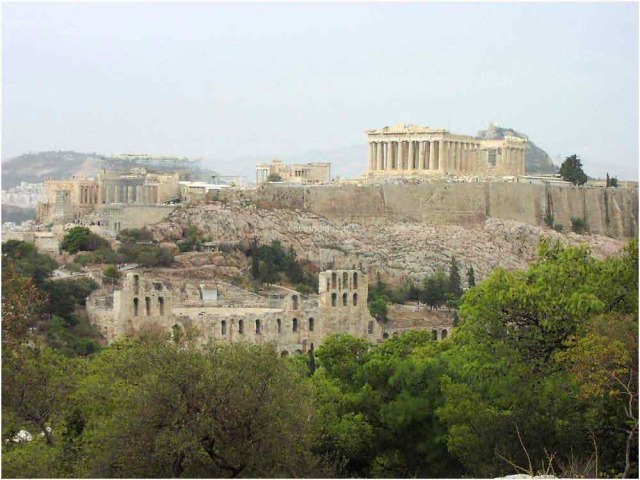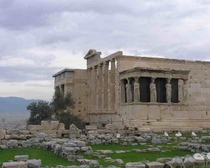Located at Athens, Acropolis is known for its temples that are located at the top of the large hill. Read more to find some fun and interesting facts about Acropolis of Athens.
Facts About Acropolis Of Athens
The Acropolis of Athens is one of the most popular and most well-known acropolis of Greece. The term Acropolis, with ‘acro’ meaning high and ‘polis’ meaning city, literally means the ‘high city’. Thus, the Acropolis of Athens is a high city that is greatest and finest sanctuary, dedicated to Goddess Athena. Though many other places in Greece have an acropolis, it is "The Acropolis of Athens”, usually referred to as the site of the Parthenon, which holds the most significance. The place is the most savored tourist destination in Athens and is one of the must-see for people who have interest in history and archeological places. Acropolis of Athens holds much significance even today which is the reason why it is also included in the ‘UNESCO World Heritage’ list. Also, in the year 2007, Acropolis of Athens was also considered to be significantly included in the ‘European Cultural Heritage List’. In order to read further about this pre- eminent monument, read on.

Fun & Interesting Facts about Acropolis of Athens
- The Acropolis is a huge hill, with a flat top.
- It is 80 feet high and 50 feet wide.
- The Acropolis' construction started in 447 BC and ended in 438 BC.
- The Acropolis, also called "the sacred rock", was built for defensive reasons.
- It was during the war time that the Greek used The Acropolis to get a better view of the positions of the enemies.
- The Greek built many temples on The Acropolis, such as the famous Parthenon that was the temple of the Greek Goddess Athena.
- During the Classical Period the Parthenon, the Erechtheion, and the Temple of Nike were built over the old ruins on The Acropolis.
- The monuments on The Acropolis reflect the successive phases in the cities history.
- The first excavations on The Acropolis were conducted between 1835 and 1837. More work was carried out by Panagiotis Kavvadias in 1885-1890.
- The first habitation remains on The Acropolis date back to the Neolithic period.
- Over the years, The Acropolis has suffered severely from pollution and from well-intentioned, but badly executed attempts at repair.
- In 1975, the Greek government began a major restoration project on The Acropolis, which was only about 40% complete by the mid-1990s.
- In 2007, a number of works on The Acropolis were moved to the New Acropolis Museum, which lies at the foot of the hill.
- The Acropolis is a great place to get an understanding of the layout of the city.
- The Acropolis was also known as Cecropia, after the legendary serpent-man, Kekrops or Cecrops, the first Athenian king.
- The structure of Acropolis is an important ancient monument built during war as a means of defense mechanism. This way the Greeks were able to keep a close check on their enemies from this complex.
- There is a stone built of limestone, which is known as ‘Acropolis rock’ which has been in existence since Late Cretaceous period.
- This structure has been in existence since the Neolithic period and provides a mesmerizing view of the sea and the land.
- Acropolis remained a residential area for some point of time till the 6th century B.C. whereas the structure was also devoted for worshipping the Goddess Athena,
- During the battle of Salamina, the Persians demolished this ancient monument in 480 B.C.
- The structure of Acropolis extends to a surface area of 30,000 metre square and also rises to about 490 ft above the water level.
- Parthenon, Temple of Athena Nike and the Erechteion are considered to be the three main structures of Acropolis. Apart from these structures, another significant monument which is found at the foot of Acropolis is the ‘Theater of Dionysus’.
- Stoa of Eumenes is another structure of importance, which used to be the walkway of the people of this area.


See also
More from iloveindia.com
- Home Remedies | Ayurveda | Vastu | Yoga | Feng Shui | Tattoos | Fitness | Garden | Nutrition | Parenting | Bikes | Cars | Baby Care | Indian Weddings | Festivals | Party ideas | Horoscope 2015 | Pets | Finance | Figures of Speech | Hotels in India : Delhi | Hyderabad | Chennai | Mumbai | Kolkata | Bangalore | Ahmedabad | Jaipur
- Contact Us Careers Disclaimer Privacy Policy Advertise With Us Lifestyle Sitemap Copyright iloveindia.com. All Rights Reserved.







